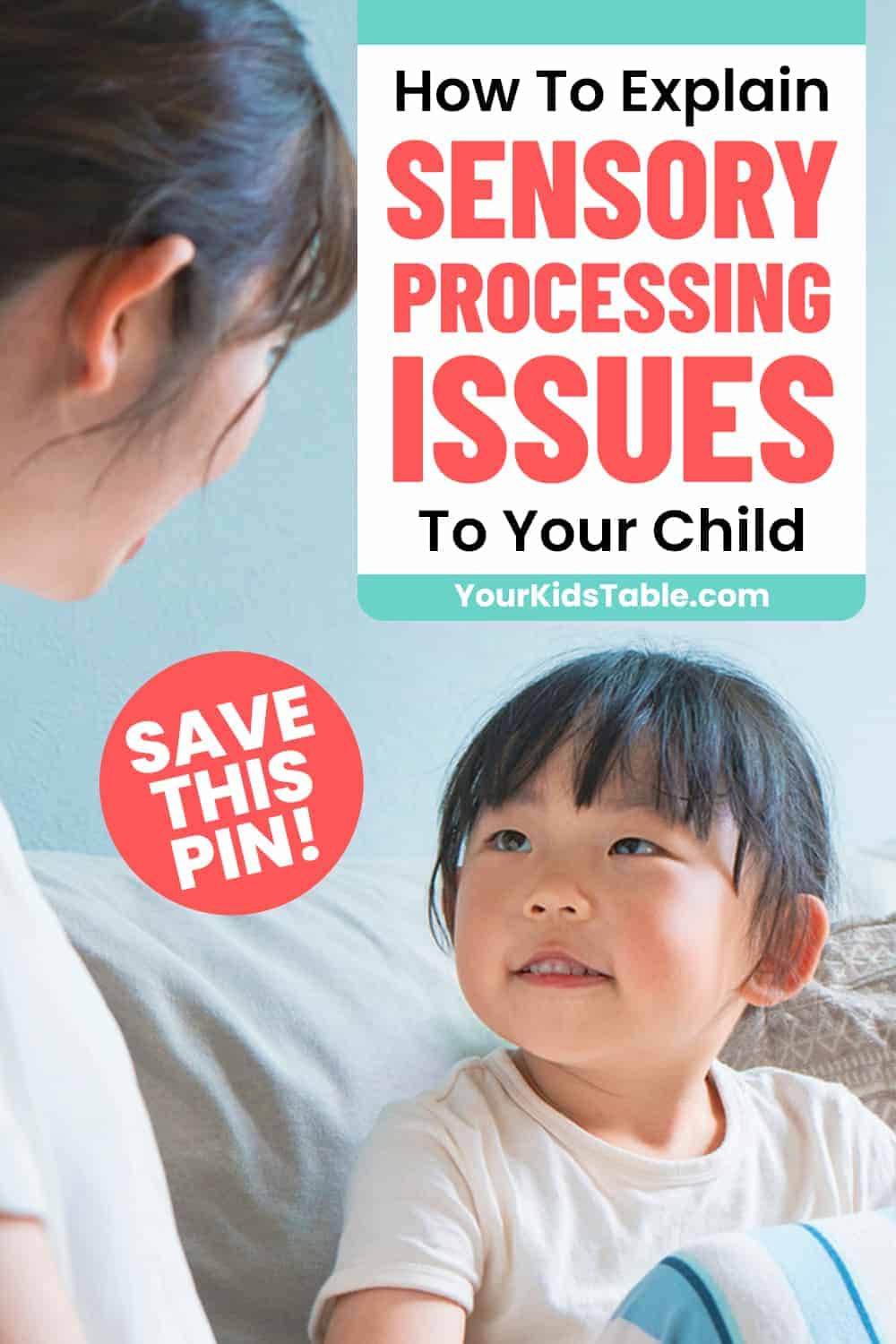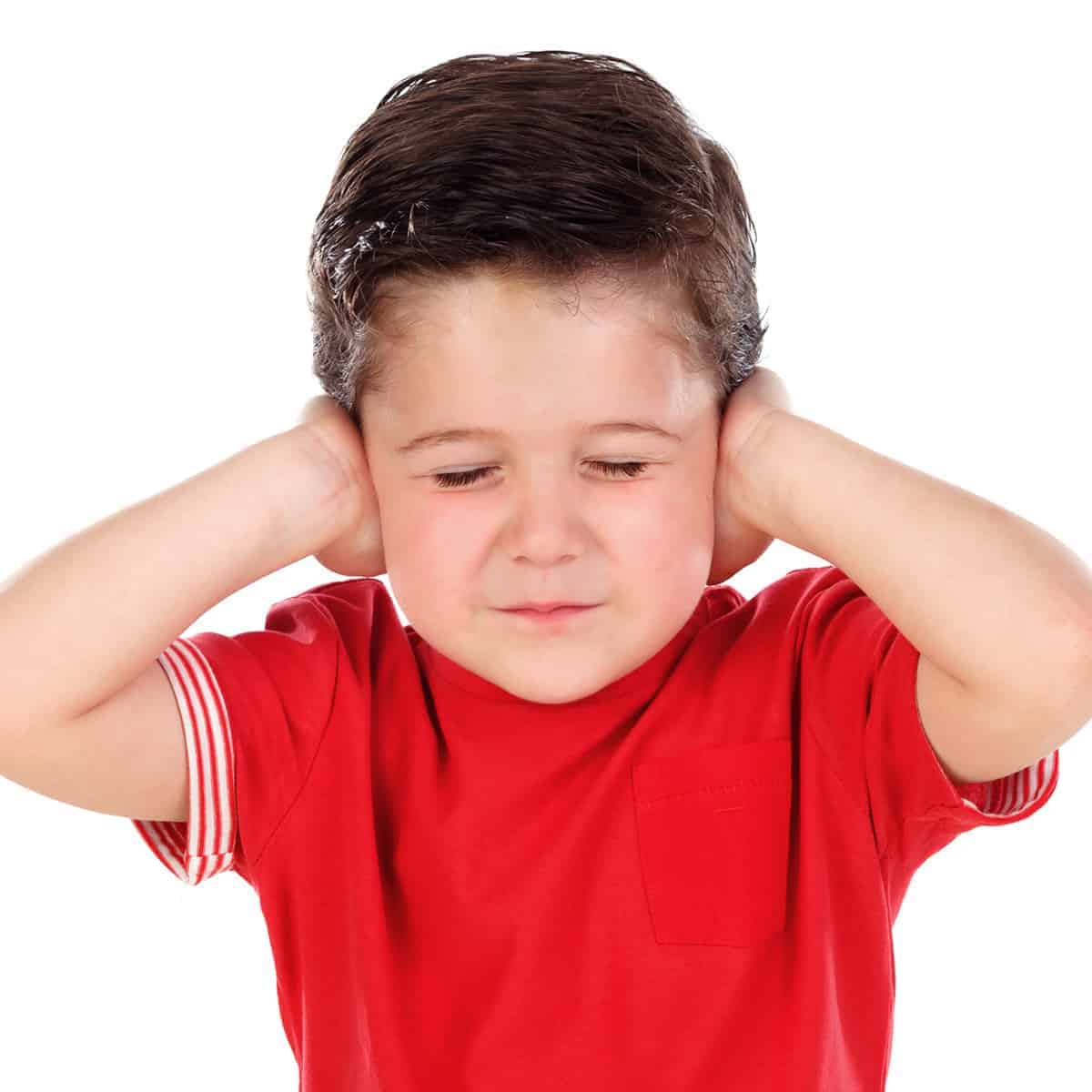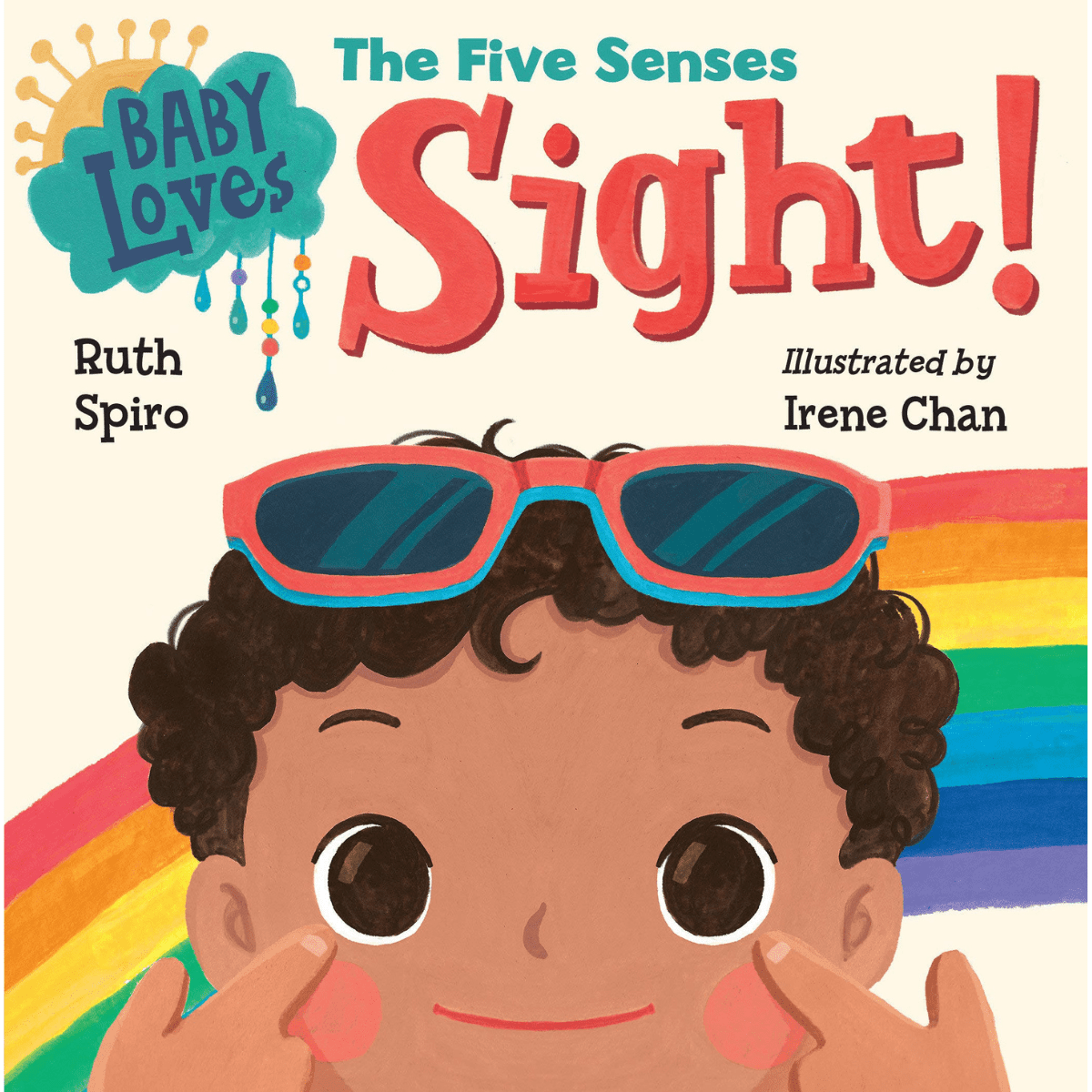Teaching your child about sensory processing issues or Sensory Processing Disorder helps kids feel empowered and advocate for their own needs. Learn how to explain it all simply to your child!
Affiliate links used below. See our full disclosure.
I was standing in a remnant carpet store with my husband looking for a new area rug for our living room. As I touched the different rolled up rugs leaning up against the wall, there was one with a deep cushy pile that had a lot of texture. It matched the room, and I decided to pick that one, in part because I knew my sensory seeking son would love the way it felt.
I didn’t mention a thing about it to him, but when we unrolled the carpet and began to move the furniture around, I turned around to see him, at 11 years old, rolling all over the carpet with a huge smile on his face as he repeated over and over again, “It feels so good.”
It was a sweet sight to my mom-occupational therapist heart. But, I knew some people would think it was weird to see see him roll around on the carpet endlessly, trying to have it touch as much of his body as possible.
Sensory Issues Look “Weird” to Some People…
In fact, I imagine some kids would’ve been told to stop by a well meaning family member, friend, or teacher.
When kids are told to stop a sensory need, they are given the impression that what they’re doing is unusual, or they’re told outright that they’re strange, the feeling that follows is often shame and embarrassment.
That sort of judgment may never come from you, but unfortunately, it may come from others.
Not only is that not fair, but when a child is behaving in an “unusual” way because of their sensory issues, it’s not a choice.
The brain is driving their preferences. My son was rolling in an almost methodical way all over the carpet because his brain was saying, “This feels good, calming. I want more.” And, he was obliging.
Participating in that activity (without any judgement) gave him a powerful sense of well being and regulated his nervous system, which allowed him to focus and interact well with those around him in the activities that he moved onto after rolling around on the rug for 5 minutes.
Some Kids with Sensory Issues Notice the Differences Themselves…
Of course, some kids are never told they’re weird or to stop over-reacting. They may be well supported by all the adults and other children around them. But, some kids will start to notice the differences themselves.
At one point, they might realize that they’re the only child in the classroom that freaks out when the hand dryers in the bathroom are turned on expectedly. Or, that the lights are too bright for them so they alone have permission to wear a hat in class.
For both of these reasons, it’s helpful to teach your child about sensory processing issues. And, really we all have them. Some have mild sensory issues, while others have moderate to severe sensory needs that can impact their life in significant ways and even cause sensory dysregulation.
What About Sensory Processing Disorder, Autism, and ADHD?
Some with more severe sensory issues may receive a diagnosis of Sensory Processing Disorder or SPD (see a list of SPD signs). And, it’s estimated that at least 75% of individuals with Autism Spectrum Disorder also have SPD. They are not one in the same diagnosis, it’s just extremely common for artistic people to have a comorbidity with SPD.
It’s believed that the other 25% of the autistic population has mild to moderate sensory difficulties.
Kids and adults with ADHD also commonly have SPD (at least 40% or more).
Explaining Sensory “Needs” to Kids Empowers Them
I’ve been told by many adults as an occupational therapist that when they finally understood why they had an unexplainable need or dislike for a certain sensation it changed their life.
It changed how they saw themselves and the narrative they’d been telling, which was often that they were weird. They didn’t fit in.
Our goal is to help all kids with sensory difficulties, or as I’d prefer to call them – sensory needs, feel empowered by understanding why they have the sensory preferences they do. That understanding also allows them to advocate for their own needs, when you as their parent or caregiver aren’t with them.
And, it helps prevent or perhaps minimize shame and embarrassment when their differences are called into attention. Because of the conversations they’ve had with you about their sensory needs, they’ll be more likely to tell you when this happens.
Not to mention that when you child does advocate for their sensory needs, it brings an overall awareness to sensory processing challenges, which our world needs.
Are you ready to teach your child about their sensory needs??
How to Explain Sensory Issues to Your Child
How you go about doing this matters.
Sensory processing is a complex topic that few adults understand, so breaking it down in a way that your child can understand is important. And, anytime we attempt to explain sensory processing difficulties or sensory processing disorder for that matter, we want to make sure the child’s takeaway isn’t “there’s something wrong with me.”
#1. Find a quiet time to talk when your child is most likely to be attentive
For a lot of kids, this is before bed or while you’re driving in the car, but choose a time that works for you.
#2. Start off with an example using your own sensory processing. Your convo might go something like this:
“You know how I can’t stand it when [insert an example of one of your sensory needs] the TV is up really loud? It makes feel jittery and like I can’t think straight. If the TV doesn’t get turned down, sometimes it even starts to make me [insert how you feel] angry, because it’s so loud in my head. That’s because of something called sensory processing, which is a part of the brain you can’t see that’s working all the time to sort through and respond to all the sensations we experience.”
Pause here and give your child a chance to think through what you’re saying and ask any questions. If they don’t have anything to say, you could continue with:
“Have you ever heard of sensory processing? We all have it, and it causes us to really, really like some sensations and some that we really, really don’t like. It’s not something you decide, it’s how your brain works, and all of our brains work a little different. Otherwise, we’d all be the same! Can you think of any sensations you really like or dislike?”
Give your child time to think and try not to put your words in their mouth. If they can’t think of anything, you can then add:
“Sensations are anything we experience from our senses. You probably learned about them in school. We get sensations from [point to the different senses as your read this list for younger kids] what we see, smell, hear, taste, touch, and when we move, spin, jump, or climb.”
Depending on your child’s age, you might then need to break down examples for each of these senses. In which case, you’d say something like:
“Some people love bright colors or watching things that spin or move quickly like a fan. Some people hate seeing flashing lights or spinning objects. Some people like big smells and it bothers other people. I’ve noticed that you seem to like/dislike [insert an obvious sensory need]. That’s because of your sensory processing. It’s not something you can control, it’s because of how your brain is wired. Just like how brain gets really bothered by [insert your example to remind them they aren’t alone] loud noises. But, there are things you/we can do to help our sensory processing.”
Use this part of the discussion to talk about your child’s sensory needs and how they make them feel. Reassure them that it’s okay that they seek those sensations out or want to avoid them. Share examples of other family members, peers, or friends sensory needs to help drive home the point.
#3. In the coming days and weeks, casually point out examples of other’s sensory challenges, when you see them
Maybe your child comes home and says a classmate cried when it was time to fingerpaint. You could explain that might be because of their sensory processing, again following up with an example of one of your child’s sensory needs.
Over time, this will become part of your language and will create a space for your kids to readily and openly advocate for their sensory needs. You can adjust the above conversation based on your child’s age.
A Video Explaining Sensory Processing Difficulties to Kids
I know this kind of conversation might seem daunting, so I’ve made a short video for your child to watch that explains what sensory processing is. You could just show them the video and say, “Hey, let’s watch this together,” as an introduction to the topic. Or, you could follow the script above and then show this video to reinforce the point.
Filming videos like this for kids is something we’re trying to see if it’s a helpful resource for you. Please let us know if the comments it the video was helpful and if you’d like to see more of them!
Adapting for Toddlers and Younger Kids
For younger kids and toddlers, you’ll probably want to simply explain what the senses are and start to share examples.
For instance, as your pointing out body parts, you can say, “Here’s mommy’s eyes. Where are yours? Our eyes see. I see your blue ball and the pink pillow. What do you see? We can see colors, lights, and things that spin and blink.”
This is a great book series for babies through age 3 to help them understand the senses:
Teaching Your Child How to Help Their Sensory Difficulties
It will be helpful to learn how to address your child’s sensory needs and you can also talk to your child about what helps them when they experience a sensory need. Do they need to simply cover their ears, open a window when smells are strong, or dim the lights?
Or, do they need to pack sunglasses in advance, have noise cancelling headphones, or a weighted vest available to use?
This is a helpful list of sensory activities that target a variety of sensory needs using what’s called a sensory diet. A sensory diet has nothing to do with eating, but giving your child the sensory support they need throughout the day.
Sensory needs can show up as seeking (wanting more of a sensation), avoiding (wanting less of a sensation), or they might not register at all, which is called low registration.
In our free sensory workshop, you can learn more about these needs and how to help your child with them. It’s common to have a combination of these various sensory needs across the 8 senses (touch, taste, smell, sight, hearing, proprioception, vestibular, and interoception).
More on Sensory Issues and Needs
Sensory Self Regulation: A Critical Skill for Kids with Sensory “Issues”
Does Your Picky Eater Have Sensory Issues?
How to Potty Train a Child with Sensory Issues
37 Sensory Toys for Kids, Toddlers, Autism, and SPD
Alisha Grogan is a licensed occupational therapist and founder of Your Kid’s Table. She has over 18 years experience with expertise in sensory processing and feeding development in babies, toddlers, and children. Alisha also has 3 boys of her own at home. Learn more about her here.




What to do when your six year old uses this knowledge to make excuses for his behavior….